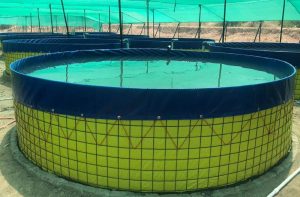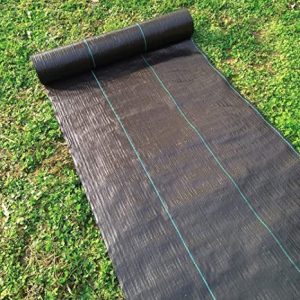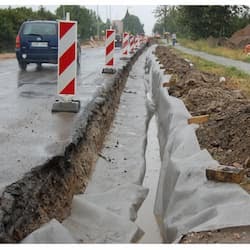How do you Build a Biofloc for a Fish Tank?

Biofloc is a method that uses a culture of heterotrophic bacteria to tackle water pollution concerns and enhance water resource usage by recycling nutrients available in the water. This Biofloc technology has helped aquaculture farms to minimize, and in some cases eliminate, water exchange while also adding value through microbial metabolic products.
Biofloc technology (BFT) is an innovative and cost-effective method for improving environmental control over fish production. This mechanism turns harmful elements like ammonia, nitrite, and nitrate into proteinaceous feed, which is a valuable result. This is the most efficient technique to adopt when there are extremely restricted water exchange difficulties under high stocking fish density ponds or tanks in order to ensure optimal quality, productivity, biosecurity, and sustainability.
The “Biofloc” device in aquaculture functions as a retention strap for nutrients in the pond, lowering maintenance expenses. Since it may be employed as a food supplement for commercially cultivated organisms, it adds value by increasing the rate of food consumption.
Indoor tanks or raceways can also be employed, however, without natural sunlight, algae will not develop effectively or at all, resulting in a Biofloc system that is purely reliant on bacteria. Bottom drains should be installed in big ponds to remove extra sludge regularly.
It’s time to concentrate on the aeration system after you’ve chosen the correct pond or tank setup. To maintain high oxygen levels and prevent sediments from settling, all Biofloc systems require continual motion. Without movement, areas will quickly lose oxygen and become anaerobic, releasing enormous volumes of ammonia and methane. A well-planned configuration of aerators is required for any pond, tank, or raceway system to avoid this. Paddlewheel aerators are commonly used in ponds.
It is recommended to pre-seed the culture water to speed up the development of your bBiofloc system and stabilize your pond. This may be accomplished by infusing the culture water with a variety of commercial or homemade solutions.
Though most species will benefit from the increased water quality provided by Biofloc systems, you should choose species that would gain the most from the additional proteins produced by eating and digesting the Bioflocs. These species are filter feeders, either entirely or partly.
To avoid ammonia peaks at the start of the farming cycle (mainly due to nitrogen in feeds), we propose jump-starting the growth and development of Biofloc in your pond or raceway system by providing adequate carbohydrate availability. Heterotrophic bacteria may proliferate and synthesize ammonia thanks to the carbon in these carbohydrates, which helps to keep the water clean.
This phase should be repeated to avoid ammonia peaks later in the production process, especially when employing high stocking densities in conjunction with significant volumes of artificial feeds.
Your Biofloc numbers should start to expand fast with lots of aeration, natural light (in most systems), and a readily available supply of carbon. Within a few weeks, the number of flocs will rise from near zero to roughly four to five units per milliliter, depending on a variety of conditions such as water temperature, available nutrients, and sunshine, as well as the number of seeded Bioflocs at the start of the operation.
Water samples must be obtained on a regular basis from now on to monitor the pond water and identify the activity of the two Biofloc kinds, as well as their densities. Outdoor Bioflocs are made up mostly of green algae and brown bacteria, with the algae relying on sunlight for development and the bacteria primarily consuming residual feeds, byproducts, and wastes.
Since algae proliferate more quickly at first, a pond will seem green at first, then turn brown as bacterial colonies take control in the weeks ahead. As the stock grows and the amount of food consumed grows, a tipping point will be achieved at which the water will remain brown.
Aeration must be greatly increased once the Biofloc system has gone brown in order to maintain the high respiration rate. Any power outage at this point might swiftly result in total crop loss owing to a lack of oxygen and the fact that many heterotrophic bacteria start generating ammonia in a low-oxygen environment. It is critical that the aeration system perform properly at all times.
A Biofloc system’s second purpose, in addition to preserving water quality at a cheaper cost and without water exchange, is to boost growth rates and feeding efficiency, hence enhancing the profitability and sustainability of agricultural operations.
Ocean Global, based in India, is a supporter of the “blue revolution” and produces Biofloc tanks to help aquaculture become more sustainable. We create Biofloc tanks using high-quality non-migratory PVC polymer, adhering to the strictest production requirements. They are India’s leading manufacturers of Biofloc Fish Tank Systems and PVC Fish Farming Tanks.
Biofloc is an extracellular polymeric substance from Ocean Global that contains a heterogeneous collection of suspended particles as well as a variety of microorganisms. Bacteria, algae, fungus, invertebrates, and detritus, among other microorganisms, make up this ecosystem. It’s a protein-rich live feed that results from the conversion of waste feed and excreta into natural food in a culture system after being exposed to sunlight.



